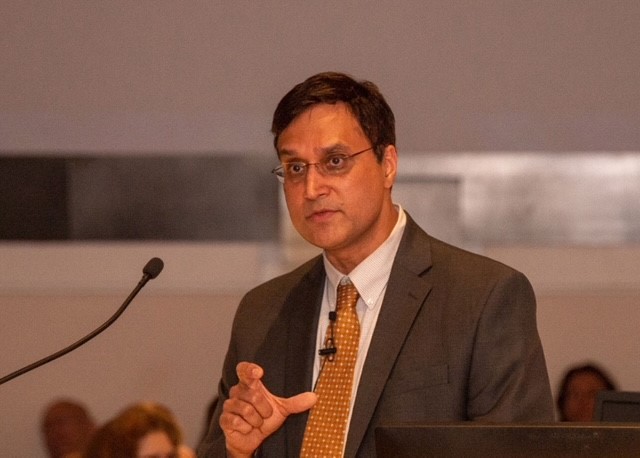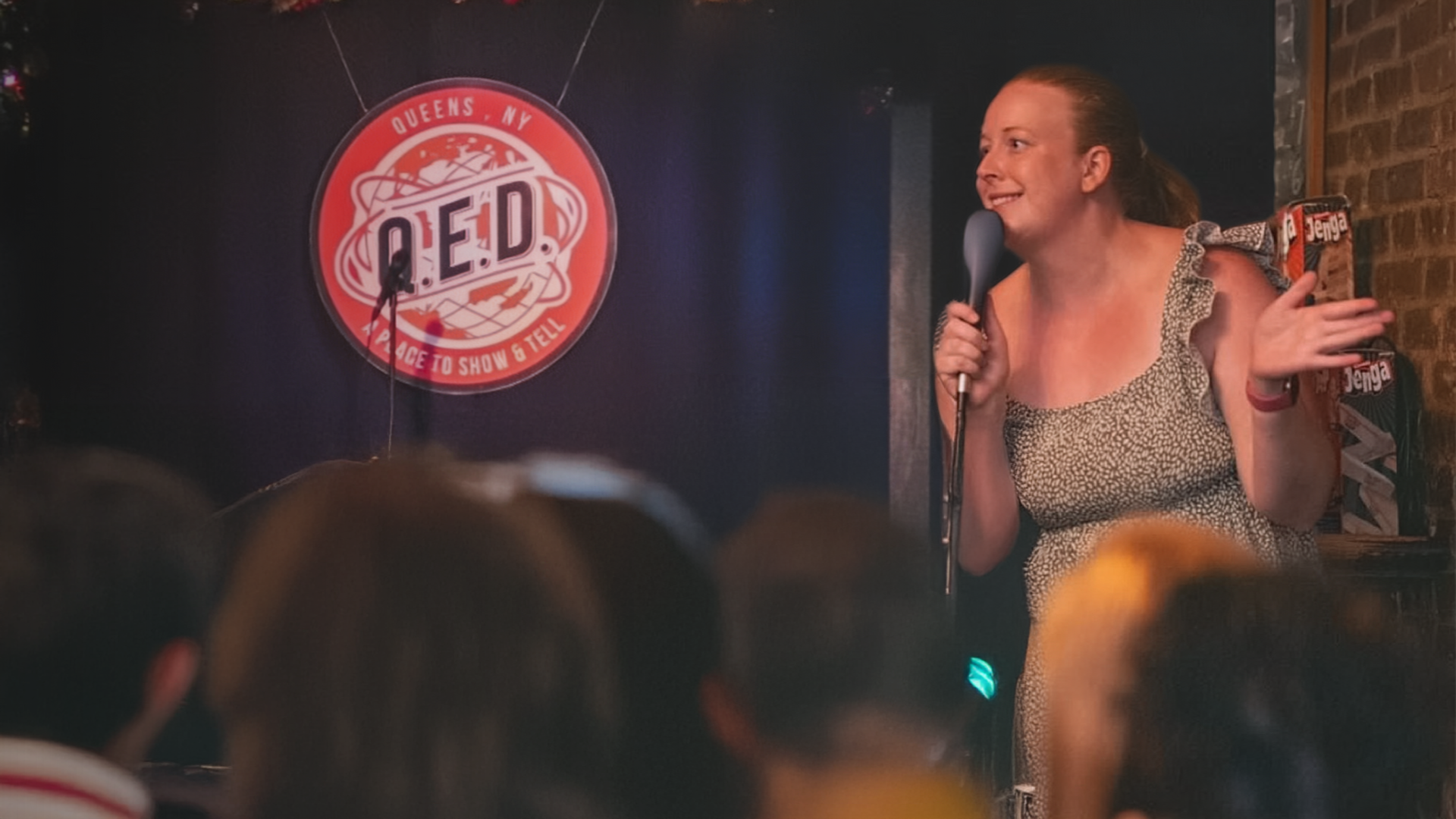Gather, Learn and Graze: Symposium Features Student Projects, Music and Food Trucks
April 28, 2022
- Author
- Mary Elizabeth DeAngelis

Created by Amelia Shields '24
They’ll sing, act and hit the drums. Or give a mini-economics lesson, some insights about a literary pursuit, or a peek into an artist’s process.
If you want to know what Davidson College students have been up to this year, head to campus on Saturday, April 30, and prepare to learn, tap your feet and be inspired.
Attend the Verna Miller Case Research & Creative Works Symposium
You’re invited to attend Davidson College’s annual celebration of research, creative work and community-based learning projects. Visit the website for a full schedule of performances and events. Free and open to the public.
More than 700 students will participate in the lively mix of research presentations, performances and displays at the college’s annual Verna Miller Case Research & Creative Works Symposium. It’s a highlight of the year and runs from 9 a.m. to 4:30 p.m. on Richardson Plaza and surrounding buildings.
After two years of living in the COVID-19 pandemic, it’s a chance for the college community to gather, meet up with old and new friends, and celebrate hard work and creativity across a wide range of academic disciplines. Food trucks will offer free lunch and treats.
Much of the work reflects the passions of bright, socially conscious, committed-to-making-the-world better students. The concerns that sparked their projects range from global warming to racial injustice to violence against women.
The symposium offers a window into the offerings of a college that stresses a broad liberal arts education.
Computer science major Michael Adenew ’24 will join classmates in a presentation connecting the readings from an African American literature class to Davidson’s troubled history of slavery. He says learning about that past is crucial to resolving social problems that exist today.
“Sometimes people look at the STEM path as so cut and dry, that it’s all about getting behind a computer and landing a big job at Google or some other giant company,” Adenew says. He learned from his fraternity brother Ben Santiago ’22 that: “Computer science should also deal with social science. What good is all that math and science you learn going to do if you’re not using it to help people?”
The Mental Health Equation
Ben Craig ’22 knew that many struggled physically, financially and emotionally during the COVID-19 pandemic. That hit home when a few students at his cousin’s middle school were hospitalized for mental health issues.
“It’s a place where kids seem to have everything going for them, they have parents who are caring and involved,” Craig said. “And yet even in the best of situations, with so many resources, the isolation and the uncertainty had a big impact on nearly everyone.”
Granted, many suffered from mental health issues before the pandemic began. Craig, an economics major and guard on the men’s basketball team, turned his attention to drug addiction. He researched state death records across the country and concluded that the pandemic did result in more drug overdoses.
Craig and his classmates in the senior economics seminar “Climate Change and COVID-19” will present the results of their research at the symposium. Each began with two ideas, bounced them off other students, and narrowed them down to a topic.
Their research ranged from how clean water scarcity caused by climate change affected handwashing during COVID-19, to whether living in a floodplain increased the likelihood of people moving. (In the latter case, the student retrieved data from the US Postal Service that seemed to contradict that hypothesis.)
Dave Martin, an economics and environmental studies professor who also chairs the college’s South Asian studies program, says his students would need far more time, data and controls to publish their research. But the projects sprang from curiosity and create the potential to learn more.
“These students took things that interested them, and asked questions,” he said. “Then they dove into the data to support or contradict what they thought they might find. In that respect, you can view the research as the start of a conversation.”
He said the execution and research will help them as they make their way into the world.
“When you’re on a job interview, and an employer asks you about work you’ve done that you’re proud of, this is something that distinguishes you from other candidates,” Martin said. “That’s a good outcome.”
Craig, who graduates next month, will begin his career as a global risk management analyst for Bank of America. He says the research he’s done taught him critical skills he’ll need for that role.
He came away from the economics project convinced that more emphasis needs to be placed on mental health issues worsened by the pandemic.
“We need to do more in the way of prevention,” he said, “so that we don’t continue to lose lives to drug overdoses.”
Unequal Treatment in Life and Death
The African American literature course started with discussions about the Toni Morrison novel Beloved, touching on themes of love, loss and unimaginable sacrifice amid the horrors of slavery. It explored the veneration of ancestors and the veneration and importance of marking burial sites.
That class, “The Literature of the Civil Rights Movement” led to the Stories (Yet) to be Told project called “Apartheid in Death.”
As the semester progressed, students in Edward M. Armfield Sr. Professor of English Brenda Flanagan’s class wound up examining two Davidson cemeteries—one filled with Black people, the other with whites—to determine the college’s relationship with them, and to investigate how slavery caused the racial divides that exist today.
The well-tended Davidson College Presbyterian Church cemetery holds the remains of white residents—many who served as college leaders or professors. The more modest Christian Aid Society cemetery is the resting place for Black workers who also had ties to the college, first as enslaved people, and later as laborers.
Students saw the literary concepts they’d talked about in class come to life in the cemeteries. They talked about how college founders and professors once owned enslaved people. They discovered how many in the Black cemetery share the names of their enslavers in the white cemetery. And they made connections to racial disparities that still exist in education, housing, healthcare and income.
“They see that the allusions in literature aren’t just fantasies,” Flanagan said. “Where somebody was buried in literature isn’t just fiction. There’s this separation that calls into question concerns about equality, parity and diversity in this place where they’re spending four years of their lives.
“These issues are conversations we’re having today—this is how literature comes alive. It’s not this stagnant thing.”
Adenew took photographs in the cemeteries and searched through college archives to find more information about those buried.
“In a class like this you realize that so much of what we read isn’t just academic,” he said. “We ask the question, ‘is there still apartheid in our community’ and you see how people are even separated by race when they’re buried. Even though some may have died a long time ago, it’s still relevant because it’s still happening in our communities today.”
Students and Flanagan worked with Maurice J. Norman, the digital projects fellow leading the college’s Stories (Yet) to be Told: Race, Racism and Accountability on Campus initiative. They also met with former college archivist Jan Blodgett, and Chaplain Rob Spach.
And tied it all back into the literature.
“Toni Morrison is so intentional about death, and how the scars of slavery and grief can be physically manifested,” said Caroline Coffey ’22, who has a double major in English and psychology and plans to become a nurse practitioner. “The people in both cemeteries are heavily Christian, but how did we treat them differently in life, and in death?”



